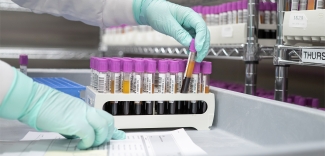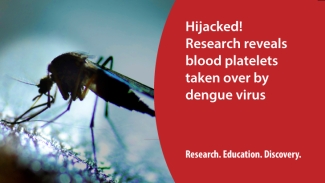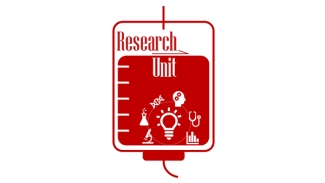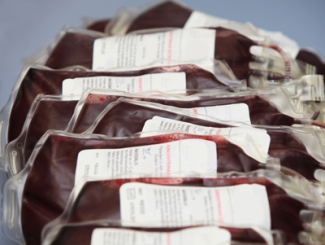COVID-19 is primarily a respiratory virus, with potential to infect the digestive system as well. People can get infected when they inhale or ingest the virus, but not via a blood transfusion.
“There is absolutely no evidence of transfusion transmission for COVID-19, or any other coronavirus,” says Dr. Steven Drews, associate director of microbiology at Canadian Blood Services. “This family of respiratory viruses just doesn’t appear to be transfusion-transmitted.”
This also applies to other coronaviruses such as severe acute respiratory syndrome (SARS), Middle East respiratory syndrome (MERS), and the unrelated influenza viruses.

How viruses work
Viruses need to find host cells, which they invade and use to replicate themselves. Once they’ve invaded, they use the cell’s infrastructure to copy their genetic instructions and create new virus particles, called virions, which then break out of the host cell to repeat the cycle.
Viruses rely on “binding sites” on their host cells, proteins which allow them to attach and invade. The binding sites for the COVID-19 virus are located in the respiratory tract, especially the lower lung, and the digestive system.There is no evidence this new coronavirus targets blood cells, or even uses plasma to move around and invade other organs.
Why COVID-19 can’t be transmitted by blood
Blood cells don’t have the binding sites the COVID-19 virus is looking for. The virus is focused on attacking the respiratory and digestive systems.
Tests for COVID-19 aren’t blood tests, they’re tests for viral genetic material done on respiratory specimens such as a throat swab or sputum sample. These tests may be supported by medical imaging, as well as by looking at symptoms.
Based on what we know now, the odds of receiving blood from an infected donor are miniscule
Since late January, Canadian Blood Services has been collecting data daily and using it to inform advanced modelling to make the best decisions in response to COVID-19.
Every seven to 10 days, or as our knowledge changes, we run models to look at the likelihood of collecting blood from a donor infected with the virus.
“Based on our models, there’s an extremely low chance we’d collect blood from an infected person,” says Dr. Drews.
By extremely low, he means extremely low.
“Based on very conservative estimates we’ve done, we’re looking at odds of one in 100 million chance of collecting a blood donation containing the virus,” he says.
This is partly because the donor would have to be asymptomatic, so carrying the virus without suffering from it. Our travel-related eligibility criteria limits donation during the time when someone may have the virus but not know it.
In conclusion, there’s zero evidence the COVID-19 virus can be transmitted by blood, and even so, at this point the odds of us collecting blood from an infected individual are at worst one in 100 million. So, there’s one less thing to worry about while you scrupulously wash your hands.
Canadian Blood Services – Driving world-class innovation
Through discovery, development and applied research, Canadian Blood Services drives world-class innovation in blood transfusion, cellular therapy and transplantation—bringing clarity and insight to an increasingly complex healthcare future. Our dedicated research team and extended network of partners engage in exploratory and applied research to create new knowledge, inform and enhance best practices, contribute to the development of new services and technologies, and build capacity through training and collaboration. Find out more about our research impact.
The opinions reflected in this post are those of the author and do not necessarily reflect the opinions of Canadian Blood Services nor do they reflect the views of Health Canada or any other funding agency.
Related blog posts
" The ever-present need for innovative ways to combat dengue and other emerging viruses and pathogens has never been clearer."
This month’s Research Unit describes efforts by researchers to create a simulation and modelling study to understand how the risk of transfusion-transmission of HTLV would change if the screening were modified.
As part of a larger ongoing effort to develop non-invasive technologies to monitor blood products during storage, researchers have developed a new technique to assess the quality of blood without breaching the sterility of blood bags.


